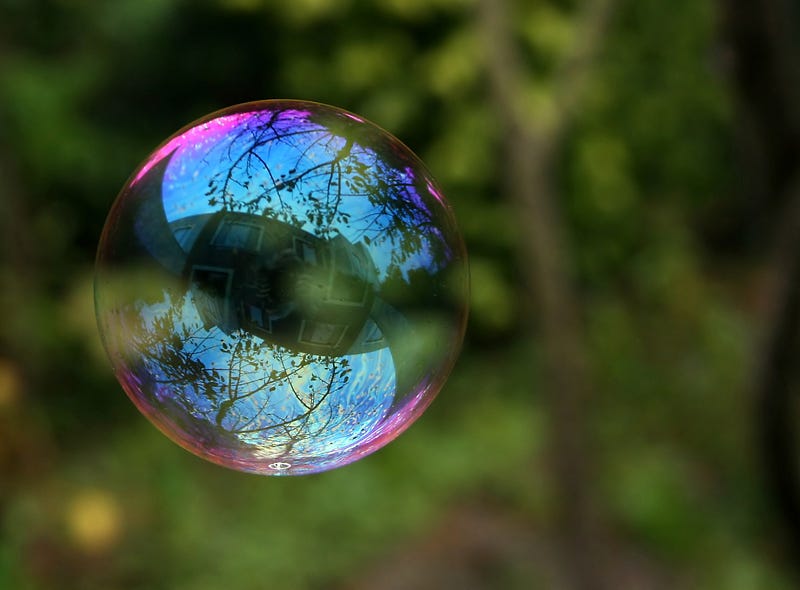# The Fascinating Science of Creating Giant Soap Bubbles
Written on
Chapter 1: Understanding Soap Bubbles
As summer rolls in and everyone finds themselves at home, crafting enormous soap bubbles can be a delightful way to combine fun with scientific exploration. But what causes these bubbles to form in the first place?
When you turn on a faucet, small bubbles appear in the water, but they quickly disappear. However, if you add a drop of soap to the water before turning on the tap, you'll notice that the resulting bubbles are significantly larger and last much longer. To comprehend how soap enhances bubble stability, we need to delve into the structure of a bubble.
Section 1.1: The Anatomy of a Soap Bubble
Why does soap promote the formation and longevity of bubbles? The answer lies in the structure of soap molecules. Bubbles are created through the interaction of water molecules with soap molecules.
Each soap molecule consists of two components: a hydrophilic (water-attracting) head and a hydrophobic (water-repelling) tail. When soap is introduced to water, the hydrophilic heads attach to water molecules, leading to the formation of bubbles that encapsulate a thin layer of water held together by soap molecules.
Subsection 1.1.1: Soap's Role Beyond Bubbles

Soap serves more purposes than merely creating bubble baths; it’s also effective at removing dirt. When soap-infused water encounters stubborn oils, the hydrophilic heads and hydrophobic tails work together to separate the oil from the water, trapping the oil within the bubble.
Section 1.2: The Shape of Soap Bubbles
Why are soap bubbles round? Just as bubbles form through molecular interactions, their shapes also arise from fundamental properties.
The spherical shape of soap bubbles is a result of surface tension, which is the tendency of molecules to cling together (cohesion) rather than adhere to another surface like air or glass (adhesion). Surface tension creates shapes that minimize surface area. A sphere, as it turns out, minimizes surface area more effectively than any other shape. For example, for a droplet with a volume of 1 cm³, a sphere has a smaller surface area than a cylinder of equivalent volume and height.

Without soap, water would tend to form cohesive droplets that minimize exposure to air. Soap molecules disrupt this tendency by reducing the water-air surface tension, allowing water to be trapped in a thin layer between the soap molecules at the surface of the bubble.
Chapter 2: Crafting Enormous Soap Bubbles
While soap enhances bubble stability, adding polymers like guar gum or polyethylene glycol can create even larger, more durable bubbles. Recent scientific research suggests that these polymers can become entangled, enabling the formation of massive, long-lasting bubbles that can be as large as a car! So, what’s the secret to crafting these giant bubbles?
To create your own soap bubble solution, you’ll need two essential items: a bubble solution and a large wand. For the wand, take a metal hanger and tightly wrap it with cotton twine, ensuring you tie the ends securely to prevent unraveling.

To prepare the bubble solution, combine 3 liters of warm water, 200 ml of dishwashing liquid (approximately one-third of a standard bottle), and a quarter teaspoon of J-lube. Once mixed, dip your wand into the solution and wave it through the air to produce large bubbles!
In conclusion, understanding the science of soap bubbles hinges on the interactions between individual soap and water molecules. By manipulating these interactions, we can create larger and longer-lasting bubbles. Now that you possess both the knowledge and the recipe for crafting giant soap bubbles, it’s time to dive into the fun!
If you enjoyed this article, consider following the Emergent Phenomena publication, where we explore how complex everyday phenomena arise—from materials to societies.